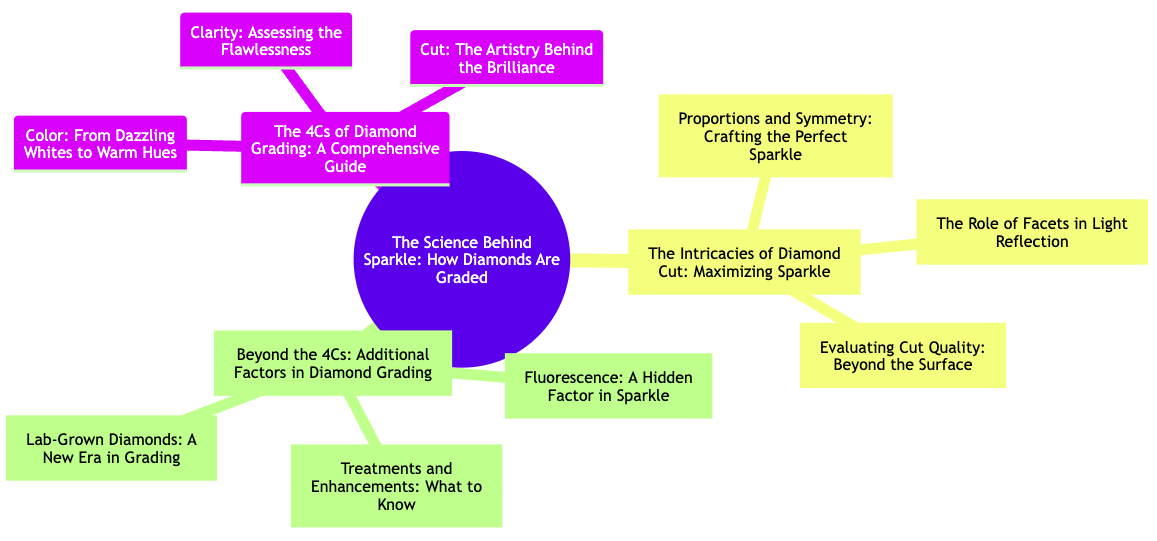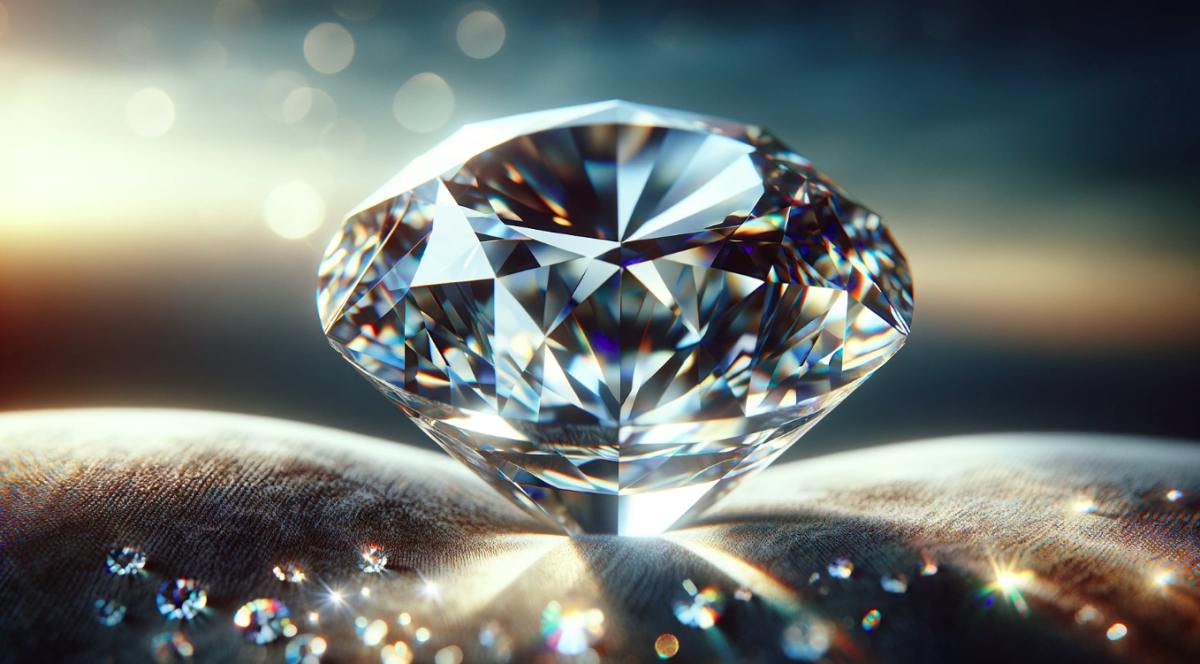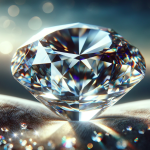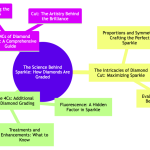Unveiling the Sparkle: The Science of Diamond Grading
Diamond grading is a fascinating science that combines artistry with precision. It's a process that determines the value and beauty of one of nature's most coveted treasures. Understanding how diamonds are graded is essential for anyone interested in these precious stones, whether for purchase, investment, or simple admiration.
This article from Gold Rush - The Woodlands aims to educate curious readers about what goes on behind the scenes with diamond grading. If you want to learn more or want to sell diamonds in The Woodlands, TX, give us a visit!
Key Takeaways
- Cut Grade's Impact on Brilliance: The cut grade crucially influences a diamond's brilliance and sparkle.
- The Role of Light in Diamond Sparkle: Light interaction plays a key role in bringing out a diamond's sparkle.
- Importance of Symmetry and Polish: Symmetry and polish are vital for the diamond's light performance.
- Understanding the 4Cs of Diamond Grading: The 4Cs (Cut, Color, Clarity, Carat) are the cornerstone of diamond grading.
- Evaluating Cut, Color, Clarity, and Carat: Each of these factors contributes uniquely to a diamond's overall quality.

The 4Cs of Diamond Grading: A Comprehensive Guide
The 4Cs of diamond grading - Cut, Color, Clarity, and Carat - are the universally accepted standards for assessing the quality of diamonds. Each of these components plays a crucial role in determining a diamond's overall appeal and value.
Color: From Dazzling Whites to Warm Hues
Diamond color grading is a subtle art. This grading system categorizes diamonds on a scale from D, which denotes a completely colorless diamond, to Z, which indicates noticeable coloration. The value of a diamond increases with its proximity to colorlessness, as this allows for the most effective light reflection, resulting in a more brilliant sparkle. The presence of color can be due to various factors, including the conditions under which the diamond was formed. The subtleties of this scale require expert eyes to discern, making color grading a skill honed by professionals over years of experience.
Clarity: Assessing the Flawlessness
Clarity grading in diamonds is a meticulous process that examines the presence of inclusions and blemishes. These imperfections formed naturally during the diamond's creation, ranging from the microscopic to the visible. The clarity scale, from Flawless to Included, provides a systematic way to evaluate these features. Flawless diamonds, free from any inclusions or blemishes when viewed under magnification, are exceedingly rare and highly valued. As clarity decreases, inclusions become more noticeable, affecting the diamond's ability to transmit light and thus its overall sparkle.
Cut: The Artistry Behind the Brilliance
The cut of a diamond is about how well it has been shaped and faceted. A well-executed cut optimizes the diamond's interaction with light, enhancing its brilliance, fire, and scintillation. The precision in cutting angles and the arrangement of facets determine how light travels within the diamond, reflecting and refracting to create that mesmerizing sparkle. The cut is arguably the most important aspect of diamond grading, as it directly influences the stone's optical properties.
The Intricacies of Diamond Cut: Maximizing Sparkle
The cut of a diamond is a critical factor in defining its overall sparkle and brilliance. This aspect goes far beyond the basic shape of the diamond; it's about the precision with which each facet is cut and how these facets work together to manipulate light. A masterfully cut diamond captures light, reflects it internally, and disperses it back through the top of the stone, creating that sought-after sparkle.
Proportions and Symmetry: Crafting the Perfect Sparkle
The proportions and symmetry of a diamond are fundamental in determining its ability to interact with light. Ideal proportions ensure that light entering the diamond is reflected internally from facet to facet and then dispersed back out of the top of the stone, maximizing brilliance. Symmetry refers to the alignment and placement of the diamond's facets. When a diamond is cut with high symmetry, it ensures uniformity and balance in the diamond's appearance, enhancing its overall brilliance and fire.
Facet Analysis and Light Interaction
|
Facet Type |
Function |
Impact on Light Interaction |
|
Crown |
The top portion of the diamond |
Directs light into the pavilion |
|
The lower portion of the diamond |
Reflects light through the crown |
|
|
Table |
Largest facet on the top |
Acts as a window into the diamond's interior |
|
Girdle |
The outer edge of the diamond |
Defines the circumference and contributes to the overall shape |
|
Culet |
Small facet at the bottom |
Prevents chipping and reflects light within the diamond |
Evaluating Cut Quality: Beyond the Surface
Assessing the quality of a diamond's cut involves examining more than just its shape. It's about evaluating the precision of the cut, the harmony of the facets, and the finishing details. These elements include the angles at which the facets are cut, their size and shape, and how they align with one another. A high-quality cut results in a diamond that interacts with light effectively, creating a balance of brightness, fire (the dispersion of light into the colors of the spectrum), and scintillation (the sparkle seen when the diamond or light source is moved). This intricate interplay of light and facets is what gives a diamond its unique and captivating sparkle.
Beyond the 4 Cs: Additional Factors in Diamond Grading
While the 4 Cs of diamond grading provide a comprehensive framework, there are additional factors that play a crucial role in determining a diamond's quality and value. These factors include fluorescence, treatments, and the unique considerations for lab-grown diamonds.
- Fluorescence: Affects how diamonds react to ultraviolet light.
- Treatments: Enhancements to improve appearance.
- Lab-Grown Diamonds: Grading standards and market perception.
Fluorescence: A Hidden Factor in Sparkle
Fluorescence in diamonds refers to how they respond to ultraviolet light. Some diamonds exhibit a glow, usually blue, under UV light. This can affect the diamond's overall appearance, sometimes making it appear whiter, but it can also lead to a hazy or oily look in stronger cases. Fluorescence is a nuanced factor in diamond grading, with its impact varying from stone to stone.
Treatments and Enhancements: What to Know
Diamond treatments and enhancements are techniques used to improve a diamond's visual appeal. These can include laser drilling to remove inclusions, heat treatments to alter color, and fracture filling to enhance clarity. While these treatments can make diamonds more attractive, they also affect their value and integrity. Buyers need to be aware of any treatments a diamond has undergone.
Lab-Grown Diamonds: A New Era in Grading
Lab-grown diamonds, which are chemically and physically identical to natural diamonds, are graded using the same 4Cs criteria. However, their origin sets them apart. Lab-grown diamonds offer a more sustainable and ethical choice, often at a lower price point. As they become more prevalent in the market, understanding their grading and value is increasingly important.
Conclusion: The Brilliance of Knowledge in Diamond Selection
Understanding the intricacies of diamond grading is key to making informed and confident choices. Whether it's the traditional 4Cs or the additional factors like fluorescence and treatments, each aspect contributes to a diamond's story and allure. For those seeking to explore the world of buying and selling diamonds, Gold Rush Denver stands as a knowledgeable guide, offering a wide range of graded diamonds to suit every preference. Their expertise ensures that customers not only find a beautiful diamond but also one that resonates with their values and needs.







